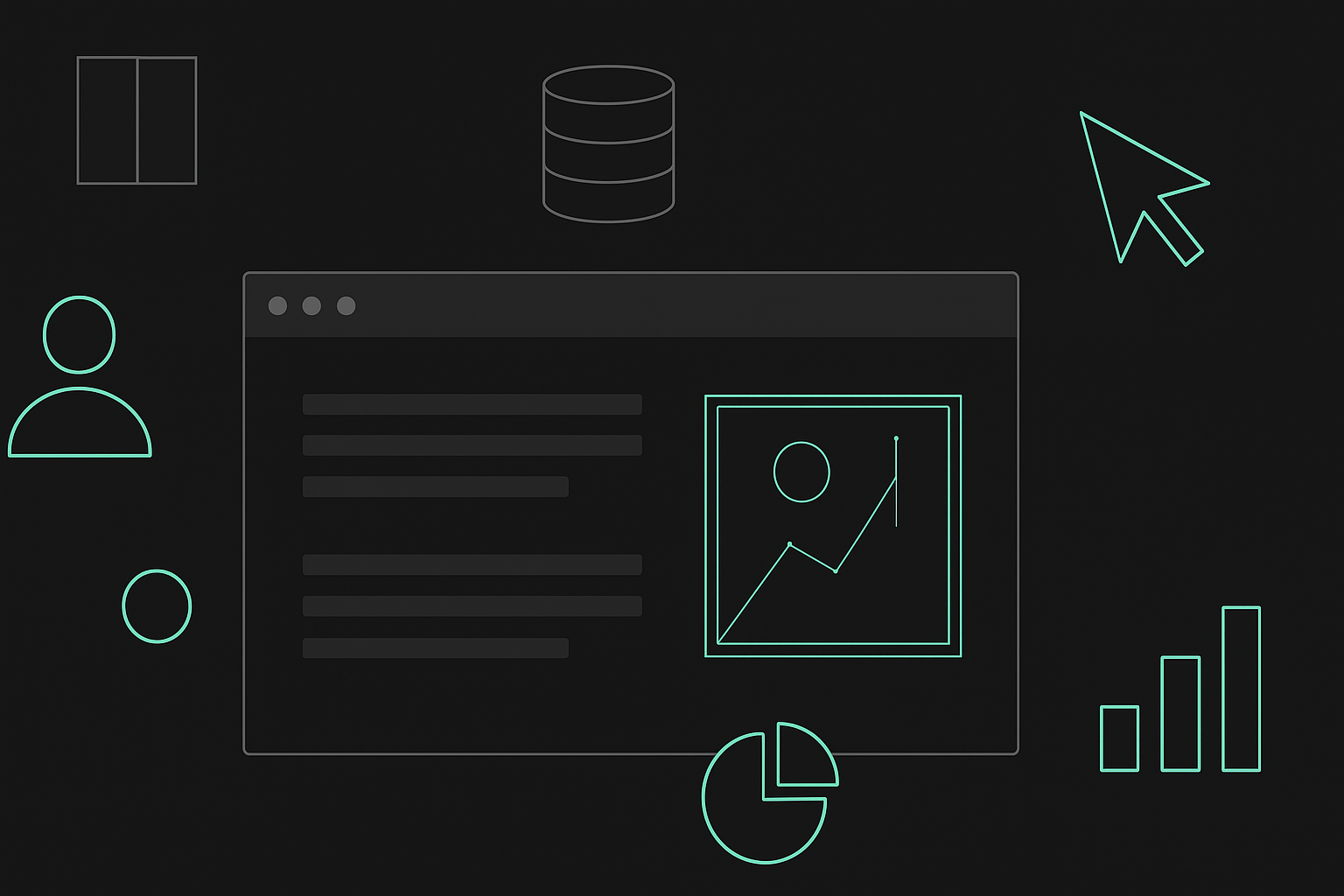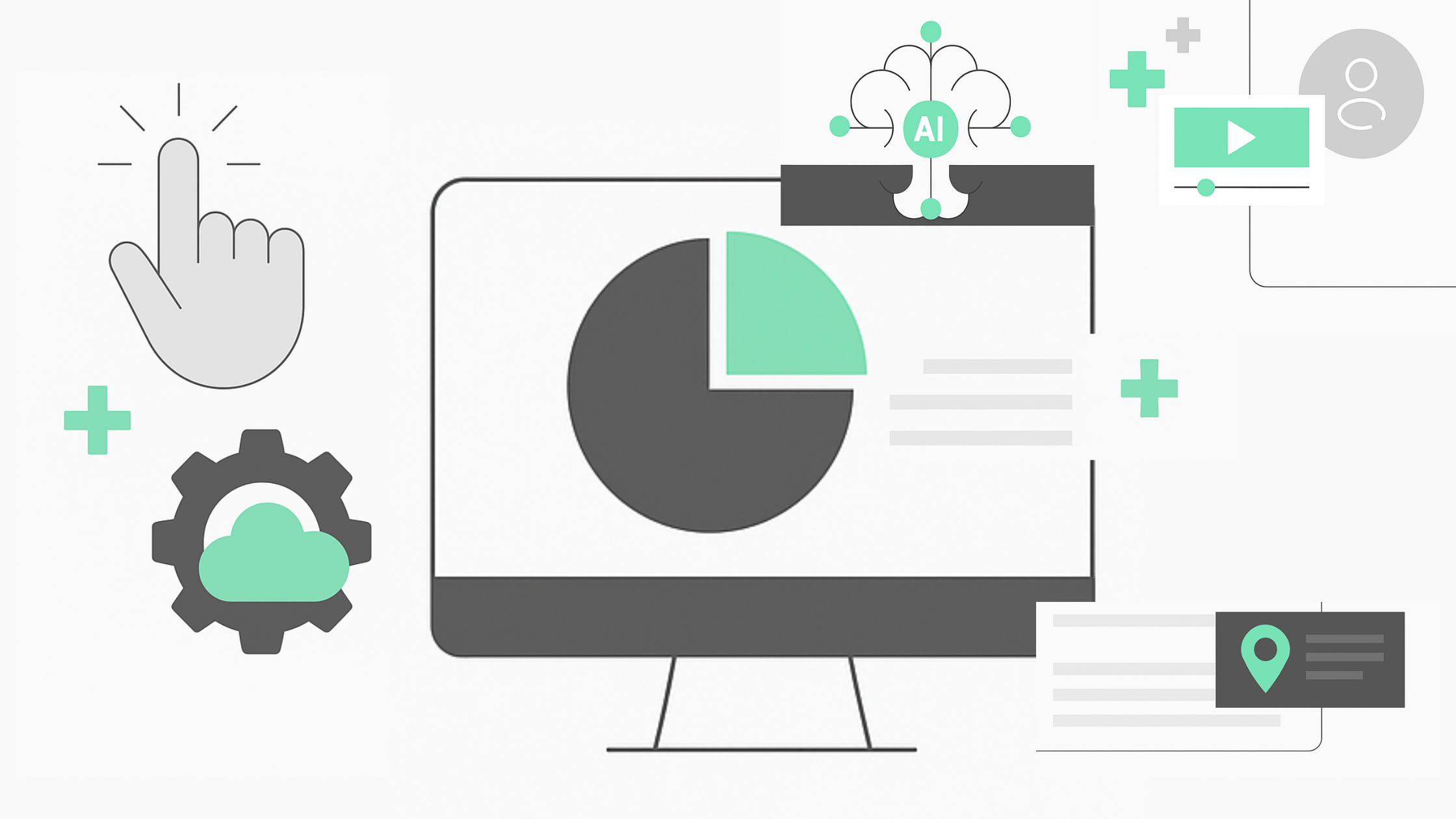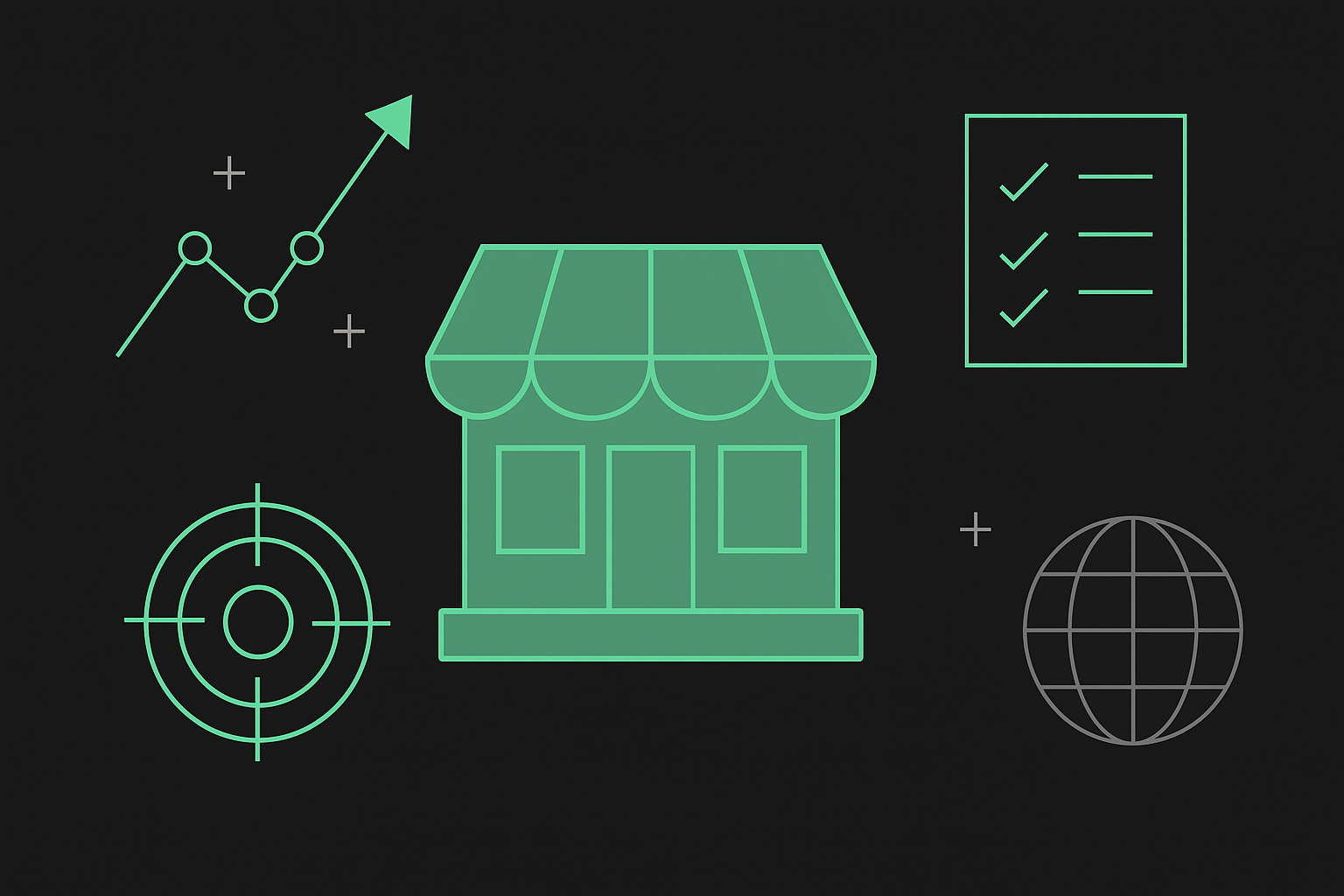HIPAA Privacy Rule Essentials for Web Development
Protected Health Information (PHI) is a critical aspect of healthcare websites. The HIPAA Privacy Rule sets clear guidelines for entities that handle health data. Simply put, if your website handles patient data, you're responsible for keeping it safe.
Ensuring that your marketing strategies align with the HIPAA Privacy Rule is not just about avoiding penalties but fostering trust and transparency with your audience. While navigating HIPAA compliance can seem daunting, especially for marketing leaders involved in handling sensitive health information, here’s a handy checklist to keep your marketing initiatives aligned with HIPAA requirements:
- Identify and define PHI in your projects.
- Determine if your organization qualifies as a covered entity or business associate.
- Apply the minimum necessary standard to all data collection.
- Implement systems for permitted uses and disclosures of PHI.
Understanding Protected Health Information (PHI) in the Digital Context
PHI includes any identifiable health information, such as medical records, treatment histories, and billing information. In web development, this means safeguarding any digital data that can be traced back to a patient, ensuring secure PHI storage while optimizing the patient experience.
Identifying Covered Entities and Business Associates in Web Development
For healthcare marketing leaders, ensuring compliance with the HIPAA Privacy Rule is vital when handling Protected Health Information (PHI). First, you must determine if your organization is classified as a covered entity or a business associate.
A covered entity directly handles PHI, whereas business associates may provide support or services like hosting or processing data. For example, with our client, Winona, Outliant acted as a business associate, developing HIPAA-compliant systems while working with third-party tools for secure data handling.
Permitted Uses and Disclosures of PHI on Healthcare Websites
PHI should only be disclosed under specific conditions, such as patient consent or legal requirements. Healthcare organizations must implement systems that manage consent and ensure that disclosures are restricted and logged, like the attestation feature outlined in the recent HHS Final Rule on reproductive health care privacy.
This rule, effective June 25, 2024, mandates that organizations must obtain an attestation ensuring PHI isn't used for prohibited purposes, such as criminal investigations related to lawful reproductive health care, before disclosing any patient information.
Applying the Minimum Necessary Standard in Web Design
The Minimum Necessary Standard is a key principle under the HIPAA Privacy Rule, which requires that only the least amount of Protected Health Information (PHI) necessary to fulfill a given task is collected, accessed, or shared.
With Winona, we applied this standard by ensuring patient data collection was minimized at every stage—only essential health information was gathered and displayed to authorized personnel. This approach not only secures patient privacy but also reduces the risk of breaches or unauthorized disclosures.

When implementing the Minimum Necessary Standard, healthcare entities should:
- Limit data collection: Only gather information essential to patient care or operational purposes. If a form asks for health history, exclude unnecessary details.
- Restrict access: Use role-based access controls to limit who can view certain PHI within the organization. Not all staff need full access to sensitive information.
- Audit disclosures: Ensure any data sharing (with third parties or internally) follows the minimum necessary guidelines, logging disclosures to prevent over-sharing.
- Redesign workflows: Avoid unnecessarily exposing PHI during routine interactions—whether it’s through automated emails, system alerts, or forms that auto-populate too much sensitive information.
Implementing Secure User Authentication and Data Protection
When managing sensitive health data, securing user access and safeguarding data is essential to ensure HIPAA compliance. This process involves a combination of authentication methods, encryption, and access control systems.
Designing Strong Password Policies and Multi-Factor Authentication
One of the key strategies to protect against unauthorized access is multi-factor authentication (MFA). By requiring both a password and another form of verification (such as a code sent to a user’s device), you can ensure that only authorized personnel access sensitive PHI. Strong password policies are equally important—requiring complex passwords reduces the chances of breaches caused by weak credentials.
Implementing SSL/TLS for Data in Transit Protection
To ensure that any communication involving PHI remains secure, SSL/TLS encryption should be employed for all data transmitted between users and servers. This is vital for protecting information shared through web forms, emails, or patient portals. For example, by implementing SSL/TLS protocols, all forms and data submissions on healthcare websites are encrypted, preventing potential interception of PHI by malicious actors.
Encrypting Sensitive Data at Rest
Encryption doesn't stop with data in transit—securing PHI also requires encryption at rest, meaning any stored data is encrypted and cannot be accessed without proper authorization. Encrypting back-end databases and servers ensures that even if unauthorized access occurs, sensitive patient data remains unreadable. For instance, storing medical records and billing information with end-to-end encryption protects against potential breaches.
Developing Role-Based Access Control Systems
Role-based access control (RBAC) is a foundational component of data security for HIPAA-compliant systems. RBAC ensures that only authorized personnel with the proper roles can access specific parts of a system that house sensitive data. This limits exposure and ensures that employees can only interact with the PHI necessary for their duties. By segmenting access based on roles—such as administrative staff, doctors, or billing personnel—you can significantly reduce the risk of unnecessary access to private health information.
By applying these security measures, your organization not only complies with HIPAA but also builds a strong reputation for safeguarding patient privacy in a digital-first world.
Developing HIPAA-Compliant Web Forms and Data Collection Methods
Building HIPAA-compliant web forms is essential for protecting PHI during data collection. A solid foundation starts with secure design principles that prioritize encryption and privacy.
Secure Design Principles for Health Information Submission Forms
Health information submission forms must be built with security-first design, incorporating encryption at every step. Forms should ensure secure submissions, encrypting data from the moment it's entered.
PHI collected through web forms needs to be managed with care. Encrypt PHI both in transit and at rest, applying strict access protocols for storage to meet HIPAA standards.
Implementing Robust Consent Management and Privacy Policies
HIPAA-compliant systems must incorporate clear consent management. Offer users transparent options to control how their data is accessed and used, ensuring privacy policies are clearly outlined and easy to understand.
Developing Secure File Upload Mechanisms for Medical Documents
When enabling file uploads, the system must secure the process. Implement encrypted file uploads for medical documents, ensuring patient records are protected throughout transmission and storage. Secure upload mechanisms safeguard sensitive files like medical records or prescriptions, adding a critical layer of compliance.
Building Secure Patient Portals and Third-Party Integrations
Patient portals hold highly sensitive data, so security and compliance are crucial. Every interaction, from login to third-party integrations, must be handled with care to meet HIPAA standards.
Implementing Secure Login/Logout Procedures and Session Management
Secure login/logout systems and session management are key for maintaining HIPAA compliance. These systems ensure that user sessions are protected and automatically terminated after inactivity, reducing risks of unauthorized access.
Creating Comprehensive Audit Trails for User Actions
A key requirement of HIPAA is comprehensive audit trails, and logging user interactions with PHI. By tracking every action taken within the portal, we ensure transparency and traceability, helping healthcare organizations remain compliant.
Ensuring API Security in Healthcare Web Applications
Third-party integrations often require external services to access PHI. Implementing secure API encryption and authentication protocols helps safeguard these integrations, ensuring that PHI remains protected when external vendors are involved.
Managing Business Associate Agreements for External Services
When third parties access PHI, Business Associate Agreements (BAAs) must be in place. For Winona, we managed BAAs with all external vendors, ensuring their compliance and safeguarding patient data at every step.
Demonstrating Privacy in Campaign Marketing
While building Winona's patient portal, we also helped maintain privacy during their marketing efforts. By ensuring marketing campaigns never accessed PHI, and securing all marketing-related data flows, Winona could safely engage their audience without compromising HIPAA compliance. We implemented clear consent mechanisms for users, ensuring they had control over how their data was used in marketing outreach. This balance between privacy and engagement allowed Winona to promote their services while upholding strict privacy standards.

Maintaining HIPAA Compliance Through Testing and Documentation
Ongoing HIPAA compliance is an evolving process that requires regular testing, updating, and meticulous documentation to ensure continued security and legal adherence.
Conducting Regular Security Assessments and Vulnerability Tests
Frequent security assessments and vulnerability tests are essential to uncover potential threats. By proactively identifying weaknesses, you can stay ahead of cyber risks, ensuring PHI is consistently protected. These tests should be a core part of your compliance strategy, as they allow organizations to address gaps before they lead to security breaches.
Implementing Ongoing Software Updates and Patch Management
Patch management plays a critical role in maintaining the integrity of healthcare systems. Regularly applying software updates and patches ensures that vulnerabilities are closed off as soon as they are identified. Staying current with updates minimizes the risk of exploiting outdated software and keeps your systems in line with HIPAA security requirements.
Developing and Maintaining Incident Response Plans
An effective incident response plan prepares your team to react swiftly in the event of a data breach or security issue. These plans should detail the necessary steps to contain, mitigate, and report the breach, as well as procedures for notifying affected individuals. A strong incident response strategy helps minimize the impact of a breach and demonstrates proactive compliance with HIPAA regulations.
Creating and Updating Documentation for HIPAA Compliance Audits
Thorough and updated documentation is crucial for passing HIPAA compliance audits. Detailed records of security measures, risk assessments, and incident response procedures ensure that your organization can demonstrate its compliance efforts. Documentation also serves as a roadmap for refining security protocols over time, providing clarity for auditors and peace of mind for your organization.
Achieving HIPAA Compliance in Healthcare Web Development
Maintaining HIPAA compliance is an ongoing commitment that goes beyond just the initial development of healthcare websites. From implementing secure authentication methods to protecting PHI through data encryption, consent management in campaign marketing, and thorough documentation, staying compliant ensures the safety of patient information and safeguards your organization from potential penalties.
If you're looking to build or enhance your healthcare website to ensure HIPAA compliance, Outliant can help. We’ve created a free 30-minute consultation call to walk you through the necessary steps to secure your web infrastructure while staying ahead of regulatory requirements.










